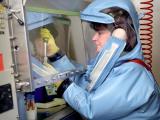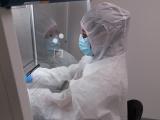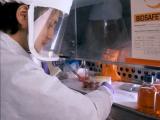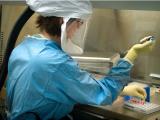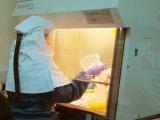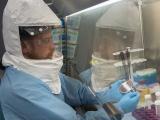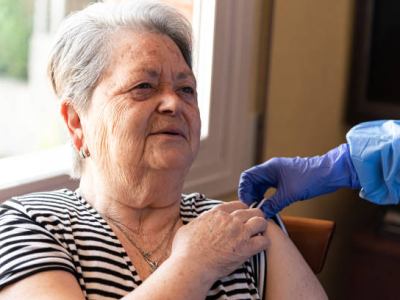The US Centers for Disease Control and Prevention (CDC) today announced the permanent appointment of its first associate director for laboratory science and safety, the agency's latest step in addressing a string of safety breaches.
The appointment of Stephan Monroe, PhD, who was named as the acting associate director for laboratory science and safety in May, marks the first time the agency's top lab administrator has reported directly to the CDC director.
Creation of a single point person for lab safety accountability first surfaced in a series of steps the CDC announced in July 2014 in the wake an anthrax incident the month before at one of its labs. At around the same time, the CDC revealed that a lab sample unintentionally cross-contaminated with highly pathogenic H5N1 avian influenza had been shipped to a US Department of Agriculture lab.
Problems at other federal facilities have kept lab safety issue in the headlines. Last summer, decades-old smallpox samples that were found to contain live virus were found abandoned in a Food and Drug Administration lab on the National Institutes of Health campus, and more recently, investigations by USA Today detailed problems at Department of Defense labs, including the shipment of live Bacillus anthracis samples—the bacterium that causes anthrax—to dozens of outside labs over the past decade.
At the end of 2014, the CDC said the search for a chief of lab safety was under way, and that CDC microbiologist Leslie Dauphin, PhD, had been appointed to oversee the task until the position was permanently filled.
Monroe, who replaced Dauphin in May, takes on the task at a time when high-profile lab safety problems have been swept up in the gain-of-function research debate and garnered the attention of Congress.
Patterns, people, practices
In an announcement today, the CDC said Monroe will spearhead lab safety and science initiatives across the agency and will coordinate critical lab policies and operations. The statement said his leadership and research background make him an ideal choice for the position.
Most recently, Monroe had been deputy director of the CDC's National Center for Emerging and Zoonotic Infectious Diseases. He had also led the CDC's Division of High-Consequence Pathogens and its Division of Viral and Rickettsial Diseases. He was a lab scientist for 17 years, when he played a key role in classifying astroviruses and developing and implementing real-time polymerase chain reaction assays to detect and characterize noroviruses.
In the CDC statement, Monroe said his three main priorities over the next 60 days focus on "patterns, people, and practices." For example, he said his office will examine lab incidents at the CDC to identify any common themes that have a broader impact on lab safety. He added that the agency will recruit and retain the best people to fill key roles in the new office and that a high priority is to identify best practices in lab science and safety that can be used throughout the agency.
The CDC said Monroe has already instituted several new measures in his acting role, including gathering lab leaders across Department of Health and Human Services agencies, holding a forum for CDC lab staff on rapid incident notification, and rolling out a pilot project involving an electronic tablet-based checklist for procedure documentation and quality management.
Pulpit to promote lab work
Monroe told CIDRAP News that he took on the position, not only to ensure quality and safety for all CDC lab operations, but also to have a lab voice represented at the highest level of the agency. "This is the first time there's been a dedicated lab position in the office of the director," he said. "It's a pulpit for me to advocate for the importance of lab work."
He said there will always be some inherent risk with lab work, but each procedure will be scrutinized to ensure that it's done in the safest manner possible, such as with nonpathogenic strains, when possible. Monroe noted that steps have already been taken to simplify incident reporting so that bench scientists don't need to guess how to handle them and that supervisors clearly know whom to notify.
Monroe said one of his goals is to get employees to also report all incidents, including small ones, as well as "near-misses," which will help guide lab policies across all CDC labs. Also, he said his job is to ensure that safety policies are known and followed with a high level of consistency at all of the CDC's 150 labs, which employ 2,000 scientists.
Other specifics he mentioned include updating lab safety training procedures, forging collaborations with other government labs to examine the root causes of safety problems, and adding new scrutiny and review of pathogen inactivation procedures.
Assembling an office staff that shares a passion for lab safety and lab work will help build a stronger CDC culture of lab safety, Monroe said. One of the external committee's findings was that the CDC needs its own branded culture of lab safety.
Though changing the culture will take time, he said he's optimistic, with strong commitment to lab safety coming from the top and enhanced empowerment coming from the lab staff ranks.
See also:
Sep 15 CDC press release




